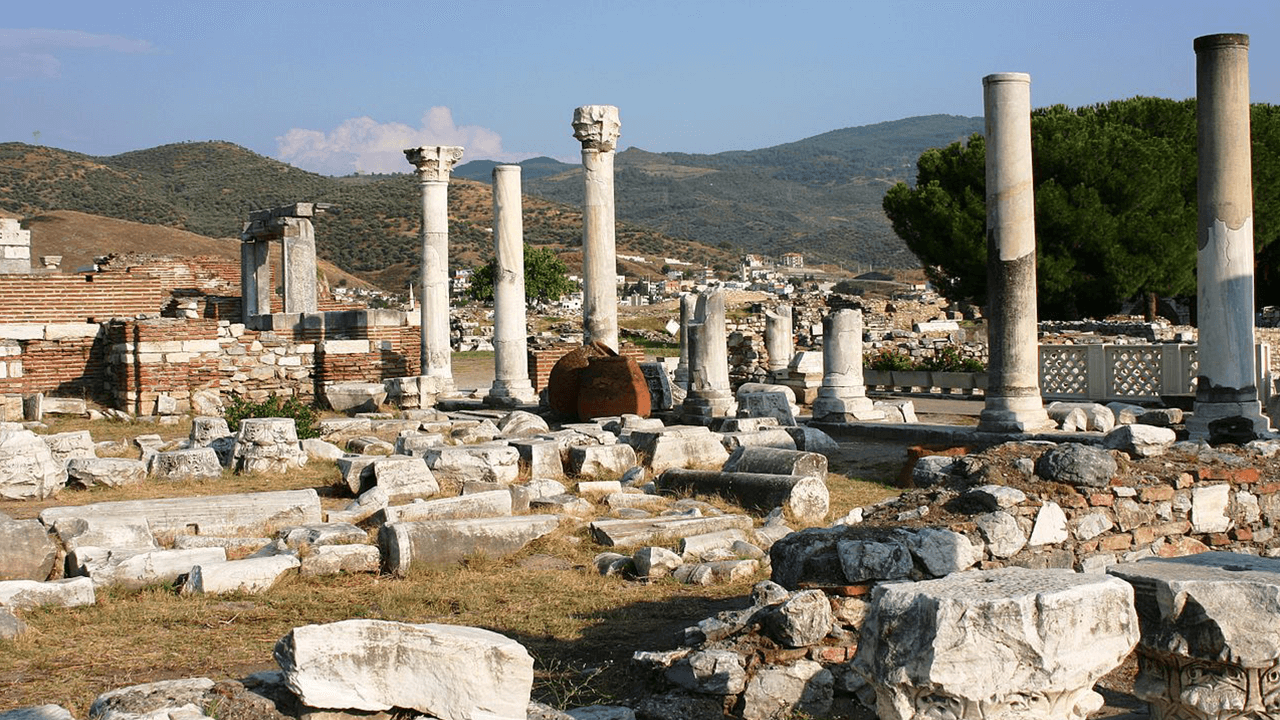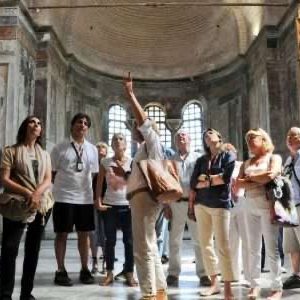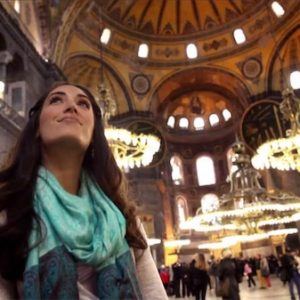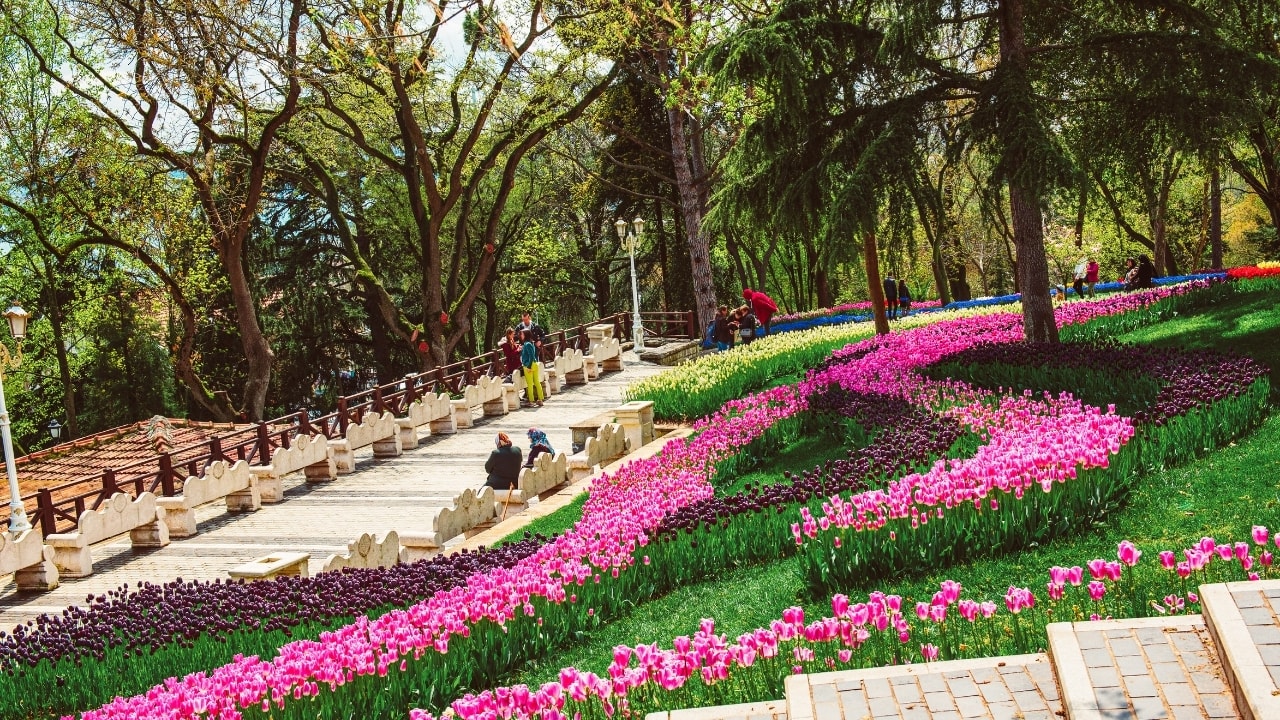Saint John Basilica: A Historical and Spiritual Treasure
The Basilica of St. John in Ephesus is one of the most important historical sites of early Christianity. This church, built in the 6th century by Emperor Justinian, was erected in honor of St. John, the beloved disciple of Jesus, and is said to house his tomb. Its structure and spiritual legacy attract pilgrims and tourists from around the world.
The Legacy of St. John in Ephesus
According to Christian tradition, Jesus asked St. John to take care of his mother, the Virgin Mary, after his death. John brought her to Ephesus, where they both settled. St. John, also known as John the Apostle or St. John the Theologian, was martyred under Emperor Trajan’s rule. However, there is debate about whether John the Apostle and John the Theologian are the same person, with the latter being the namesake of Ayasuluk, the Turkish name of the hill where the basilica stands.
History of the Basilica and Justinian’s Construction
First Church and Justinian’s Basilica
In the 2nd century AD, a small church was built in honor of St. John on Ayasuluk Hill. This church was replaced in the 6th century by the impressive cross-shaped basilica built by Emperor Justinian, whose ruins can still be admired today. The basilica was designed with four domes along its axis and a large central dome over St. John’s tomb.
Architectural Design and Religious Significance
The basilica has a cross-shaped floor plan, with four domes aligned along its longitudinal axis and a central dome that stands out over the sacred tomb of St. John. This main dome represents the spiritual center of the basilica, where pilgrims have believed for centuries that the dust from the tomb possesses healing powers.
Architectural Highlights of the Basilica
The Basilica of St. John features several architectural elements characteristic of Byzantine churches. Among these are:
The Synthronon and the Apse
In the apse of the central nave, beyond the transept (the transverse nave that crosses the main nave perpendicularly), was the synthronon, a series of semicircular seats for the clergy. This space was used by religious leaders and symbolizes the spiritual importance of the basilica.
The Treasury and the Baptistery
The north transept housed the treasury, which was later converted into a chapel. North of the nave lies the baptistery, an earlier structure that served as a place for baptism and still remains part of the ruins.
The Citadel and Ayasuluk Hill
At the top of Ayasuluk Hill is a citadel built during the Byzantine period and later expanded by the Seljuks. This fortress offers panoramic views of the region and adds additional historical value to the site. On the hillside is the Isa Bey Mosque, built by Isa Bey, a member of the Aydınoğlu principality.
The Unique Architecture of the Isa Bey Mosque
Built in the 14th century, the Isa Bey Mosque is the first example in Anatolia of a mosque with a porticoed courtyard and pool. Its design, which includes columns and a cruciform layout, makes it a symbol of the succession of religions that have marked the region: from the pagan temple to the Christian church and finally the Muslim mosque.
The Importance of the Basilica of St. John for Tourism and Faith
The Basilica of St. John and its surroundings are visited annually by thousands of tourists and pilgrims who come to explore its history, unique architecture, and spiritual significance. From St. John’s tomb to the citadel and the Isa Bey Mosque, the site offers a rich experience of culture and faith.
A Place of Pilgrimage and Popular Beliefs
The belief in the healing power of the dust from St. John’s tomb has attracted pilgrims from all over. This sacred site remains a place of prayer and reflection for many, who seek spiritual connection on this historic hill of Ayasuluk.
Exploring the Ruins and Visitor Tips
Exploring the ruins of the Basilica of St. John allows one to get a close look at Byzantine and Ottoman architecture. It is recommended to wear comfortable footwear and prepare to spend several hours touring the site, especially if you also plan to visit the citadel and the Isa Bey Mosque.
Conclusion
The Basilica of St. John in Ephesus is a historical and spiritual treasure that reflects centuries of faith and culture in Anatolia. With its impressive architecture, history, and symbolically rich surroundings, this basilica offers a unique experience that connects the past with the present. From its connection to St. John and the Virgin Mary to its transformation over the centuries, this site remains a sacred and fascinating place for those who visit.














3 thoughts on “Saint John Basilica”
★★★★★
Exploring ‘Saint John Basilica’ exceeded all my expectations. A perfect combination of culture, beauty, and knowledge.
★★★★★
Looking for an authentic and enriching experience? ‘Saint John Basilica’ is the place to be! Absolutely worth the visit.
★★★★★
Visiting ‘Saint John Basilica’ was an extraordinary experience, offering insights and enjoyment like no other. Highly recommended!